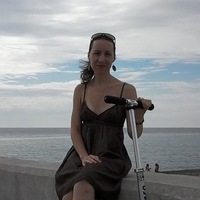#небезнадёжныйПонедельник
В книжке Высоковского "Визуальные образы городской среды" вычитала такую мысль про связь любви к дачному садоводству и революции 1917 г.
1. С приходом советской власти у жителей нашей страны не сразу, но довольно быстро отобрали собственность на землю.
2. Постсоветские города отличаются безликостью и неухоженностью.
3. С семидесятых годов горожанам разрешили иметь шесть соток земли, ещё лет через двадцать разрешили на нём строить жилые домики (до этого только сараи можно было). И вот на этих 6 сотках люди начали проявлять очень интересную активность. Да, с одной стороны, время было голодное и выращивали еду. Но! Дело этим не ограничивалось. Стали разводить бесполезные с утилитарной точки зрения цветы, когда разрешили строить постепенно стали пытаться построить что-то красивое (в меру своего художественного вкуса). В общем, совершать с утилитарной точки зрения странные действия.
4. Собственно мысль: на территории дачных участков люди начали реализовывать свою ответственность за землю. Город весь не их, весь чужой, управляемый непонятно кем, а этот пяточок земли их - и на нём сразу проявилось здоровое отношение к месту на котором живёшь: ответственное, заботливое, активное. Это значит, что горожане у нас нормальные, просто что-то не то случилось с правом собственности.
В книжке Высоковского "Визуальные образы городской среды" вычитала такую мысль про связь любви к дачному садоводству и революции 1917 г.
1. С приходом советской власти у жителей нашей страны не сразу, но довольно быстро отобрали собственность на землю.
2. Постсоветские города отличаются безликостью и неухоженностью.
3. С семидесятых годов горожанам разрешили иметь шесть соток земли, ещё лет через двадцать разрешили на нём строить жилые домики (до этого только сараи можно было). И вот на этих 6 сотках люди начали проявлять очень интересную активность. Да, с одной стороны, время было голодное и выращивали еду. Но! Дело этим не ограничивалось. Стали разводить бесполезные с утилитарной точки зрения цветы, когда разрешили строить постепенно стали пытаться построить что-то красивое (в меру своего художественного вкуса). В общем, совершать с утилитарной точки зрения странные действия.
4. Собственно мысль: на территории дачных участков люди начали реализовывать свою ответственность за землю. Город весь не их, весь чужой, управляемый непонятно кем, а этот пяточок земли их - и на нём сразу проявилось здоровое отношение к месту на котором живёшь: ответственное, заботливое, активное. Это значит, что горожане у нас нормальные, просто что-то не то случилось с правом собственности.
#happyMonday
In Vysokovsky's book "Visual Images of the Urban Environment" I read this thought about the connection between love for country gardening and the 1917 revolution.
1. With the advent of Soviet power, the residents of our country were not immediately, but rather quickly took away their land ownership.
2. Post-Soviet cities are characterized by facelessness and neglect.
3. Since the seventies, the townspeople were allowed to have six acres of land, another twenty years later they were allowed to build residential houses on it (before that, only sheds were allowed). And on these 6 acres people began to show very interesting activity. Yes, on the one hand, the time was hungry and food was grown. But! The matter was not limited to this. They began to plant flowers that were useless from a utilitarian point of view, when they were allowed to build, they gradually began to try to build something beautiful (to the best of their artistic taste). In general, perform strange actions from a utilitarian point of view.
4. Actually the thought: on the territory of summer cottages, people began to realize their responsibility for the land. The whole city is not theirs, the whole stranger, ruled by someone who knows who, but this heel of their land - and a healthy attitude to the place where you live immediately manifested itself: responsible, caring, active. This means that our townspeople are normal, just something is wrong with the property rights.
In Vysokovsky's book "Visual Images of the Urban Environment" I read this thought about the connection between love for country gardening and the 1917 revolution.
1. With the advent of Soviet power, the residents of our country were not immediately, but rather quickly took away their land ownership.
2. Post-Soviet cities are characterized by facelessness and neglect.
3. Since the seventies, the townspeople were allowed to have six acres of land, another twenty years later they were allowed to build residential houses on it (before that, only sheds were allowed). And on these 6 acres people began to show very interesting activity. Yes, on the one hand, the time was hungry and food was grown. But! The matter was not limited to this. They began to plant flowers that were useless from a utilitarian point of view, when they were allowed to build, they gradually began to try to build something beautiful (to the best of their artistic taste). In general, perform strange actions from a utilitarian point of view.
4. Actually the thought: on the territory of summer cottages, people began to realize their responsibility for the land. The whole city is not theirs, the whole stranger, ruled by someone who knows who, but this heel of their land - and a healthy attitude to the place where you live immediately manifested itself: responsible, caring, active. This means that our townspeople are normal, just something is wrong with the property rights.
У записи 4 лайков,
0 репостов,
243 просмотров.
0 репостов,
243 просмотров.
Эту запись оставил(а) на своей стене Ольга Максимова

























